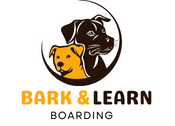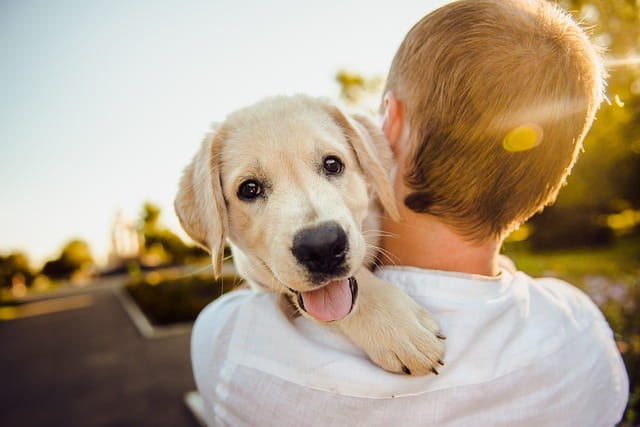Showing displacement behavior in dogs is common. But do you know why? And what to do when your dog displays such behavior?
Dogs, often revered as man’s best friend, possess various behaviors that communicate their feelings, needs, and responses to multiple stimuli in their environment. Among these behaviors, displacement behavior in dogs is a fascinating and sometimes puzzling aspect of canine communication.
Displacement behavior in dogs is an action that seems out of context or unnecessary, occurring when a dog experiences conflicting emotions or stress.
This comprehensive guide delves into the intricacies of displacement behavior in dogs, exploring its causes, types, and effective management strategies.
Find what’s in your dog’s mind…
Understanding Displacement Behavior in Dogs:
Displacement behavior refers to dogs’ actions in the conflict, frustration, uncertainty or stress-inducing situations. These behaviors serve as a coping mechanism, allowing the dog to dissipate tension or redirect their focus from the source of stress.
Displacement behaviors are often subtle, including licking lips, yawning, scratching, sniffing, and sudden grooming. While these behaviors may seem innocuous, they provide valuable insights into the dog’s emotional state and well-being.
Causes of Displacement Behavior in Dogs:
Several factors can trigger displacement behavior in dogs, ranging from social interactions to environmental stimuli. Common triggers include:
1. Social Conflicts:
Dogs may exhibit displacement behaviors during social interactions with other dogs or humans, especially when they feel conflicted or unsure about how to respond. For example, a dog may yawn or sniff the ground when a dominant dog approaches to signal submission or appeasement.
2. Stressful Environments:
Environmental stressors such as loud noises, unfamiliar surroundings, or crowded spaces can induce displacement behaviors in dogs. These behaviors help dogs cope with anxiety or discomfort by providing a temporary distraction or outlet for pent-up energy.
3. Emotional Conflicts:
Dogs may display displacement behaviors when experiencing conflicting emotions, such as excitement and fear or arousal and inhibition. For instance, a dog may excessively lick or scratch when unsure how to react to a new, stimulating environment. For example, if a dog is uncertain whether to approach a new person or retreat, it may engage in displacement behaviors to cope with this conflict.
4. Frustration:

Dogs may resort to displacement behaviors when they cannot achieve a desired outcome. This frustration can arise from various sources, including being restrained on a leash, encountering obstacles during play, or being unable to access a desired object.
5. Uncertainty:
Dogs may display displacement behaviors when uncertain about how to react in a particular situation. This uncertainty can stem from ambiguous social cues, conflicting motivations, or unfamiliar stimuli.
6. Anxiety and Fear:
Dogs, like humans, experience anxiety and fear in various contexts. Loud noises, unfamiliar places, separation from their owners, or encounters with aggressive individuals can trigger displacement behaviors such as pacing, panting, or excessive grooming.
7. Cognitive Dissonance:
Cognitive dissonance occurs when dogs experience conflicting thoughts or emotions. This often happens when they receive conflicting signals from their environment or owners. Displacement behaviors, such as head turning or avoiding eye contact, may help dogs cope with this internal conflict.
Types of Displacement Behavior in Dogs:
Displacement behaviors in dogs can be classified into several categories based on their nature and underlying motivations:
1. Self-Directed Behaviors:
These behaviors involve actions directed towards the dog’s body, such as excessive licking, scratching, or grooming. Self-directed displacement behaviors often serve as a means of self-soothing or stress relief, helping the dog cope with internal turmoil or discomfort.
2. Environmental Behaviors:
Dogs may engage in displacement behaviors directed towards their immediate environment, such as sniffing the ground, pacing, or digging. These behaviors allow dogs to redirect their focus from external stressors or stimuli, providing a temporary escape or distraction.
3. Social Behaviors:
Displacement behaviors can manifest during social interactions with other dogs or humans. Examples include yawning, lip licking, or averting eye contact, which diffuses tension or signal submission in social contexts.
Primary Displacement Behaviours in Dogs:
Displacement behaviors in dogs, such as sniffing, tail wagging, and pacing, are intriguing signals of their emotional state and coping mechanisms in response to stress or discomfort. Let’s delve into each of these behaviors individually to understand their significance:
Sniffing:

Sniffing is a fundamental behavior for dogs, serving as a means of exploration, communication, and gathering information about their environment.
However, a dog’s excessive or aimless sniffing can often manifest stress or anxiety. This behavior may occur when the dog feels overwhelmed, uncertain, or uncomfortable, such as encountering unfamiliar dogs, humans, or environments.
Despite its association with stress, sniffing can also serve as a self-soothing mechanism for many dogs, helping them to alleviate tension and regulate their emotions. Therefore, dog owners need to observe the context and intensity of sniffing behavior to gauge their pet’s level of anxiety accurately.
Tail Wagging:
Tail wagging is one of the most universally recognised dog behaviors, often interpreted as a sign of happiness or excitement. However, not all tail wags convey the same message. A dog’s tail wags low, slowly, or stiffly, indicating stress, agitation, or uncertainty. Similarly, a tucked tail can signify discomfort or fear. Additionally, the direction of the tail wag can provide valuable insights into the dog’s emotional state.
A wagging tail directed to the left may signal concern or unease, while a wag to the right might indicate more positive feelings. Therefore, carefully observing tail-wagging patterns can offer valuable clues about a dog’s mood and well-being.
Pacing:
Pacing, characterised by repetitive back-and-forth movements or restlessness, is another displacement behavior commonly observed in dogs experiencing heightened anxiety or stress.
Even dogs known for their calm demeanour may exhibit pacing when they feel overwhelmed or unable to settle down. This behavior often arises when the dog perceives a lack of control or faces environmental stimuli that trigger discomfort.
Regular exercise is a beneficial strategy for reducing anxiety in dogs, as physical activity helps release pent-up energy and promote relaxation. Thus, when a dog is observed pacing, it may be a suitable time for owners to engage in activities that provide mental and physical stimulation, such as going for a leisurely walk or engaging in interactive play.
Other Displacement Behaviors in Dogs:
1. Self-Grooming:
Excessive grooming is an expected displacement behavior observed in dogs. While grooming is natural, excessive grooming may indicate stress or discomfort.
2. Lip Licking and Yawning:
Dogs may lick their lips or yawn in situations of stress or anxiety. These behaviors help them self-soothe and communicate their discomfort to others. Rapid or exaggerated lip licking and yawning are often signs of escalating tension.
3. Panting:
Panting is a natural cooling mechanism for dogs, but excessive panting, especially in the absence of physical exertion or heat, can indicate stress or discomfort. Dogs may pant excessively when anxious, fearful, or in pain.
4. Scratching or Shaking:
Dogs may scratch themselves or shake their bodies as a displacement behavior. While scratching can alleviate itching or discomfort, excessive scratching or shaking may signal stress or irritation.
5. Avoidance Behaviors:
Dogs may engage in avoidance behaviours, such as turning their heads away or avoiding eye contact, to diffuse tense situations or signal submission. Avoidance behaviors help dogs minimise conflict and maintain social harmony.
Management Strategies for Displacement Behavior in Dogs:
Effectively managing displacement behavior in dogs requires a multi-faceted approach that addresses underlying triggers and promotes positive coping mechanisms. Here are some strategies to consider:
1. Identify Triggers:
Observe your dog’s behavior closely to identify potential triggers for displacement behavior. Take note of specific situations, environments, or social interactions that precede these behaviors.
2. Provide a Safe Environment:
Create a calm and secure environment for your dog by minimising exposure to stress-inducing stimuli. Establish a predictable routine, provide ample exercise and mental stimulation opportunities, and ensure access to a quiet retreat or safe space where your dog can relax.
3. Positive Reinforcement:
Use positive reinforcement techniques to encourage desirable behaviors and reinforce calmness in stressful situations. Reward your dog for exhibiting relaxed body language or using alternative coping mechanisms like sitting or lying quietly.
4. Counterconditioning:
Gradually expose your dog to trigger situations or stimuli while pairing them with positive experiences, such as treats, toys, or praise. This process, known as counterconditioning, helps change your dog’s emotional response to perceived threats or stressors, reducing the likelihood of displacement behaviors.
5. Seek Professional Guidance:
If displacement behaviors persist or escalate despite your efforts, consider seeking guidance from a certified dog behaviorist or trainer. A professional can thoroughly assess your dog’s behavior and develop a personalised behavior modification plan to address underlying issues effectively.
Conclusion:
Displacement behavior in dogs is a natural response to stress, anxiety, or conflict, serving as a means of self-soothing and communication. Owners can support their dogs’ emotional well-being and strengthen their bond by understanding the causes and types of displacement behaviors and implementing effective management strategies. With patience, empathy, and appropriate interventions, dogs can learn to navigate challenging situations confidently and resiliently.

